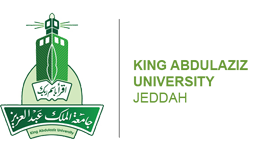 Introduction
Introduction
The Red Sea is a prime environment and resource for the Kingdom of Saudi Arabia. Centuries of shipping and fishing activities supported local communities. In recent times, knowledge about this environment has got critical because large scale projects and increasing human settlements are endangering this unique environment. Information on biodiversity and ecosystems can help to identify particularly vulnerable regions and be used for appropriate and sustainable planning and exploitation. Because of these important issues, the Faculty of Marine Sciences of King Abdulaziz University in Jeddah took its responsibility and decided to implement a Red Sea biodiversity project in cooperation with the Senckenberg Natural Research Society in Frankfurt am Main, Germany.
The Senckenberg Natural Research Society is the oldest bio- and geodiversity research organisation in Frankfurt. The society founded its museum and research institute back in 1821. Since 1822 collections were made along the Red Sea coast through Eduard Rüppell. Main collection areas were the Gulf of Aqaba and the surroundings of Jeddah. These research activities have been continued subsequently up to these days. Senckenberg participated in the deep sea environmental study in preparation of the metalliferous sediment mining plans set forward in the 1970ies through the “Saudi Sudanese Commission for the Exploitation of Red Sea resources”. Senckenberg also took lead in organizing a marine wildlife sanctuary at the Saudi Gulf coast after the oil spills of the Kuwait war of 1991. All this scientific and historical background are the reasons for joining into a cooperation project with King Abdulaziz University.
During the first project phase, three extensive field surveys were conducted along the coastline of Saudi Arabia in 2011, 2012 and 2013 in order to access the biodiversity of the nearshore and coral reef-associated fauna. Additionally, one smaller survey in 2014 and several bycatch analyses of the local trawl fishery near Jazan were conducted. Specimens of all animal groups were collected and analysed at the Senckenberg Research Institute in Germany.
Project Phase II started at July 01, 2016. The main aim of this second phase is to complete the identification and cataloguing of the sampled fauna and to build up a reference collection at Jeddah in Saudi Arabia, which will build the foundation for the King Abdulaziz Marine Museum.


